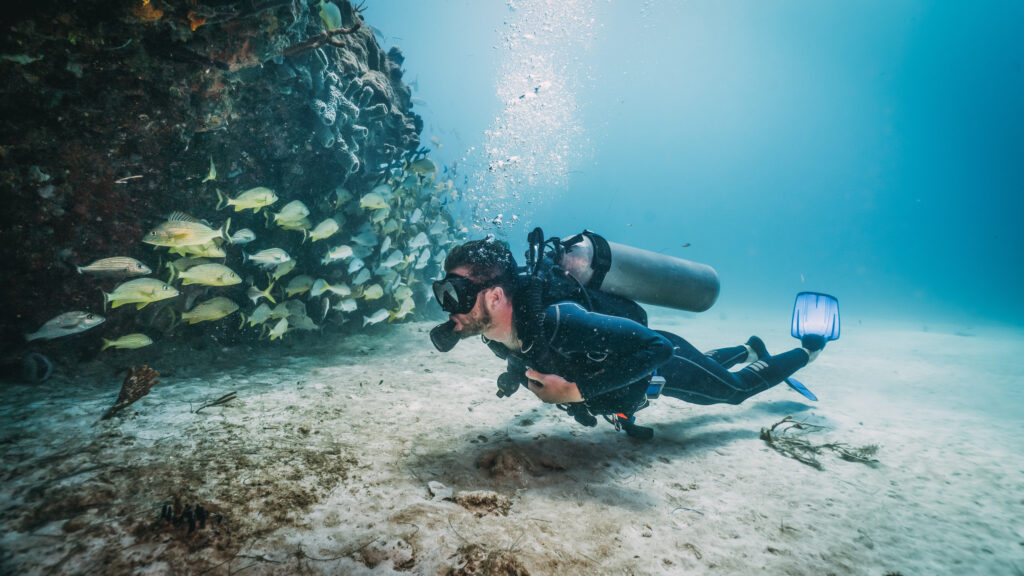What is Fogging?

Fogging refers to the condensation of moisture on the interior surface of a scuba diving mask, which can obscure vision and hinder underwater experiences. This phenomenon occurs when there is a significant temperature difference between the warm air inside the mask and the cooler water outside. As the diver exhales, moisture-laden air comes into contact with the cooler mask lens, resulting in condensation or fogging. Understanding the mechanisms behind fogging and how to prevent it is essential for ensuring a safe and enjoyable diving experience.
What is a Low Volume Mask?

A low volume mask is a specific type of diving mask designed to minimize the internal air space between the diver’s face and the lens. This reduced volume makes it easier to equalize pressure and clear the mask of water, enhancing comfort and efficiency, especially in activities such as freediving and spearfishing. Low volume masks are distinguished by their close-fitting design and the ability to improve a diver’s overall underwater experience by offering a broader field of vision and less buoyancy.
What is the Professional Association of Diving Instructors (PADI)?

The Professional Association of Diving Instructors (PADI) is the world’s largest diving training organization, renowned for its comprehensive education system and certification programs. Founded in 1966, PADI has played a pivotal role in standardizing and enhancing diving training globally. With a mission to explore the underwater world safely and responsibly, PADI offers a wide range of courses that cater to beginners and experienced divers alike. Its extensive network of dive centers and professionals has made it a cornerstone of the diving industry, contributing significantly to the sport’s popularity and accessibility.
What is Entry when Scuba Diving?

Entry techniques in scuba diving are critical for ensuring diver safety and environmental preservation. Proper entry methods allow divers to enter the water with minimal risk of injury and help protect marine environments from damage. Understanding and mastering various entry techniques is essential for divers of all skill levels, as it impacts both the initial moments of the dive and the overall diving experience.
What is a Dropoff?

A dropoff in scuba diving refers to a steep underwater slope or cliff that descends sharply from a relatively shallow area to much deeper waters. These underwater geological features are significant for divers due to their dramatic landscapes and the rich marine life they often host. Dropoffs are found in various parts of the world and are treasured for their breathtaking views and the unique diving experiences they offer. These areas are not only visually striking but also ecologically vital, serving as habitats for a wide variety of marine species.
What is a Scuba Diving Hood?

A scuba diving hood is a critical component of diving gear, designed to protect divers’ heads from the cold and various underwater hazards. It plays a crucial role in maintaining body temperature during dives in colder waters, thereby enhancing the overall diving experience and safety. Typically made from neoprene or other insulating materials, the hood covers the head and neck, leaving the face exposed or partially covered. Its primary function is thermal insulation, but it also provides some protection against marine life and minor abrasions.
What is a Primary Light?

A primary light is an essential tool for scuba divers, serving as the main source of illumination during underwater excursions. The role of a primary light extends beyond simply illuminating the surroundings; it enhances visibility, aids in navigation, and significantly contributes to safety. Whether diving in murky waters, exploring intricate underwater caves, or embarking on a night dive, a reliable primary light ensures that divers can see their environment clearly, identify potential hazards, and communicate effectively with their diving partners. Understanding the importance and functionality of primary lights is crucial for anyone engaging in scuba diving activities.
What is a Mask Squeeze?

What is a Mask Squeeze? Mask squeeze, also known as facial barotrauma, is a painful and potentially dangerous condition that may occur during rapid descents in scuba diving. As a diver descends, the ambient pressure in the water increases, leading to a disparity between the pressure inside the mask and the surrounding water pressure. If […]
What is Freediving?

Freediving, also known as breath-hold diving or apnea, is an underwater activity that involves diving without the aid of scuba equipment or artificial breathing apparatus.
What is an LED Dive Light?

LED dive lights are a critical tool for underwater exploration, providing divers with the necessary illumination to navigate and observe their environment. Light Emitting Diode (LED) technology has revolutionized underwater lighting, offering a reliable and efficient source of light that is well-suited for the unique demands of diving. This article explores the history, technological aspects, design features, types, applications, advantages and disadvantages, maintenance, safety considerations, and market trends of LED dive lights.
